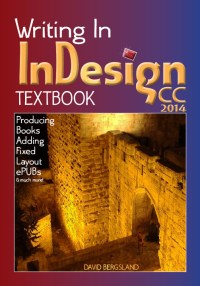The Kindle fixed layout software moves books
 As I mentioned a while ago, I made textbook versions of my two best sellers: Practical Font Design and Writing in InDesign. The process was very simple and easy. I just uploaded the PDF I had developed for download. It had a bit of color added, but it is basically the print version slightly optimized for viewing on-screen. The conversion was very fast and seemingly flawless. Like I mentioned in an earlier post, it’s just a wrapped PDF so far, with no interactivity.
As I mentioned a while ago, I made textbook versions of my two best sellers: Practical Font Design and Writing in InDesign. The process was very simple and easy. I just uploaded the PDF I had developed for download. It had a bit of color added, but it is basically the print version slightly optimized for viewing on-screen. The conversion was very fast and seemingly flawless. Like I mentioned in an earlier post, it’s just a wrapped PDF so far, with no interactivity.
It reads very well on an iPad.
However, I imagine that things don’t work so well on smartphones…even those as large as the iPhone6. I’m considering making the type larger to compensate for that issue, but that would make the body copy uncomfortably large on the iPad.
Surprisingly, it’s selling/borrowing fairly well. Because it is a unique edition, I could put it into KDP Select. I can’t do this with the Reflowable versions because they’re for sale in the iBookstore, Nook, Kobo, Scribd, Gumroad, and several more. KDP Select makes it available on Kindle Unlimited and in Amazon Prime (The Kindle Lending Library). The KU/KOLL sales are about 150% of normal sales. BUT, with the large download charge for a 20 MB ebook (about $3 USD), I may actually lose money for each Kindle Unlimited read or Amazon Prime download. I’ll have to wait and see about that. Even if I get the normal share from the Amazon slush fund, the KU/KOLL book will be available at at least an 80% discount.
It looks like offering books in Amazon’s fixed layout is worthwhile.
For smaller books with less of a download charge and a much lower price, it looks like a win no matter what. As usual, for 99¢ books, you actually make more money from KU/Koll sales. But it does add to sales. The normal reflowable Kindle version is still selling better than the fixed layout.
However, like all sales in publishing your mileage will probably be different than my experience. The bottom line is that you will get sales by using Amazon’s fixed layout and they are promising more options in future upgrades of the software to possibly offer interactivity and so on. I’d be very surprised if they ever come close to the publishing power of ePUB3 FXL.
